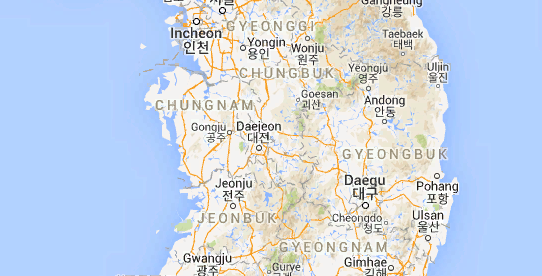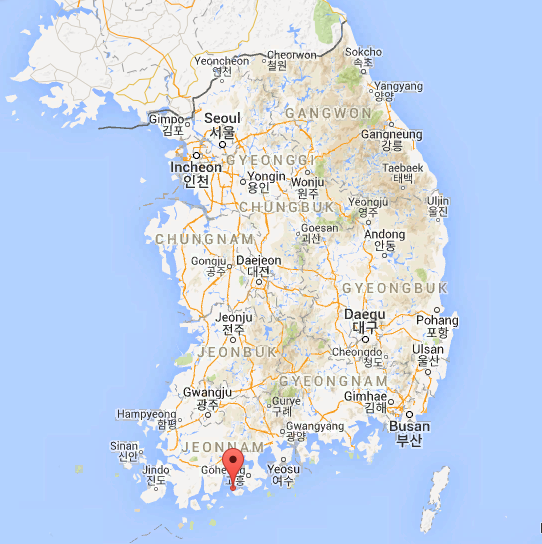The Somewhat-Willing Inhabitants of Sorok Island


Off the southwestern corner of the Korean Peninsula is Sorokdo, or Sorok Island. At first glance, it looks like a good vacation getaway — it is a tiny but accessible one-and-three-quarter square miles (4.46 km2) spot of land with nice beaches, pine trees, and is home to about 1,000 people, give or take a few hundred. You can visit if you want — as of 2009, there’s a bridge connecting Sorok Island to the mainland — but the government prefers you didn’t. And more to the point, the government prefers that the residents of Sorok Island don’t leave, either.
And most of those residents wouldn’t have it any other way.
Sorok Island has a brutal, inhumane history. In 1916, Japan — which then controlled the Korean Peninsula — used the island as a colony for those suffering from leprosy. At the time, leper colonies, quarantined from the rest of society, were very common — the disease lasted years, was incurable (that’s not longer true), was believed to be highly contagious (it’s not), and often left those afflicted disfigured. Separating lepers from the healthy people seemed prudent, perhaps, but as is often the case when people are relocated against their will, more atrocities soon followed. According to the Independent, Japan treated the patients like “human guinea pigs,” forcing sterilizations, performing unnecessary surgeries, and experimenting on corpses. Patients were also put to work against their will, under threat of violence.
When the Japanese left the region in 1945, Korea took over control of the island, and while the brutality stemmed somewhat, conditions did not improve very much. Men and women sufferers were allowed to marry one another, but only if the man underwent a vasectomy first. Sorok Island was still left without the requisite resources needed to run an adequate medical facility hosting its roughly 25,000 residents. And the population was still isolated; Korea kept the quarantine in effect until 1968 and continued to relocate leprosy sufferers to the island until 1991. In 2009, a bridge connecting Sorok Island to mainland South Korea opened. The bridge, at least in the public eye, aimed to end the isolation.
It didn’t work, as deep-seated distrust required more than a path across the water. As one mainland motel owner told the Taipei Times, he didn’t want to bring the two worlds together: “We used to keep the lepers away. Now I know they are not infectious, but I still feel uneasy about their ugly looks.” That type of bigotry is not surprising, and it fueled distrust in the opposite direction, too. Many of Sorok Island’s residents — now numbering around 600 — have decided to remain in the now-former leper colony. Some are staying put because they feel unwelcome on the other side; as the Daily Mail explains, “many former leprosy sufferers say they’ve never visited a public bath house, a popular pastime, and some are still turned away at restaurants. Many are shunned and ostracized by their families too.”
But for most of the remaining leprosy patients, it’s simply too late for them to abandon the only home they’ve known, however terrible it once was. The population is aging and, finally, getting some degree of compensation. In 2001, Japan began paying out restitution packages worth £35,000 ($55,000) each, and in recent years, Korea is also making arrears (although the amounts are widely reported to be paltry). Further, the treatment centers are still open on the island, and the free services are now actually pretty good.
As a result, many of formerly quarantined generation of lepers have opted to stay isolated from the rest of their nation, instead of crossing the bridge.
 Bonus Fact: Sorok Island isn’t the only leper colony from where formerly quarantined residents don’t choose to leave. The Romanian village of Tichilesti was established in 1875 as a leper colony, and for 116 years, leprosy sufferers were sent there for an unending life of quarantine. In 1991, the residents were welcome to leave, but as the BBC reported a decade later, “after spending most of their lives there, few of them have rushed to seize this opportunity.” Sooner or later, the village will die out, as no one is moving in. The population of the village, which was around 200 in 1930, is down to about 19 people.
Bonus Fact: Sorok Island isn’t the only leper colony from where formerly quarantined residents don’t choose to leave. The Romanian village of Tichilesti was established in 1875 as a leper colony, and for 116 years, leprosy sufferers were sent there for an unending life of quarantine. In 1991, the residents were welcome to leave, but as the BBC reported a decade later, “after spending most of their lives there, few of them have rushed to seize this opportunity.” Sooner or later, the village will die out, as no one is moving in. The population of the village, which was around 200 in 1930, is down to about 19 people.
From the Archives: Harmadillos: Why you shouldn’t eat an armadillo. (Hint: it has to do with leprosy.)
Take the Quiz: In what nations is leprosy most prevalent?
Related: A plush version of the microbe that causes leprosy. Doesn’t actually give you the disease.
